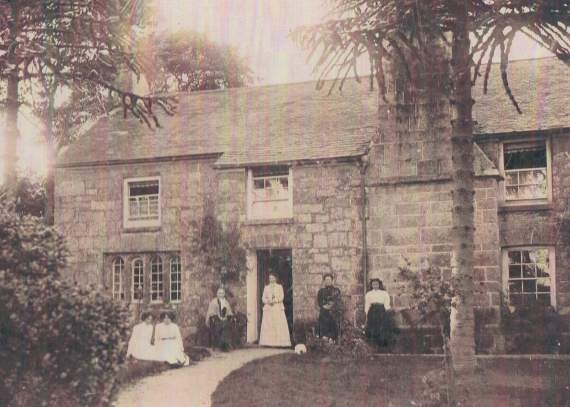Cornwall’s Buildings at Risk group has told the fascinating story of a farmhouse that was once part of a thriving settlement, and is now stranded in the midst of the industrial china clay workings.
Just over a century ago Meledor, near St Stephen’s, was a busy village. Its school, with 97 pupils, had opened in 1896.
Today most remnants of its past have been lost to china clay development, yet one element remains – the 16th century farmhouse. This historic grade 2 listed building is however situated on an island within very active clay workings, and is owned by clay pits operators IMERYS. The question for many is what to do with such an important building in such an inhospitable location?
The name Meledor derives from the Melledor family who lived and farmed the site during the early medieval period. John Melledor’s daughter married into the Rosogan family - Richard Rosogan being one of the poll tax collectors listed in 1377. The Rosogans rose to prominence during the late-medieval and Tudor period, indeed in 1500 John Rosogan appears as one of the leading owners of tin works and blowing houses in Cornwall.
From their new-found wealth a new house was built at Meledor, possibly by 1504 when a license was granted for the family to take divine service in their private chapel or, more likely, by 1510, the date that appears on a worn datestone on the property. The present farmhouse is said to incorporate some of an older mansion. Of the old chapel Heritage Gateway notes ‘Chapel gone but several carved stone fragments, a crowned corbel head, segment of an arch, an ornamented bracket and a curious stone bowl [survive]’. Built into the top of the chimney of the house is a pinnacle and some small arched stonework and a bearded face with a possible crown is carved onto a single piece of granite, these may well be remnants of the earlier chapel.
Documents show that a John Rosogan ‘Gentleman’ was pardoned for Stannary Court offences during the reign of Henry VII and, in 1549, prominent Catholic leaders John and James Rosogan rose against Henry Arundell in what became known as the Prayer Book Rebellion. Despite marrying well the Rosogan family sold Meledor in 1612 to the Bevill family.
It seems that the Elvin family were farming from Meledor during the 18th century. In 1822 John Arthur married into the Elvin family, a marriage that supplied future generations of farmers until the 1950s. James Hawkey Elvins emigrated with his wife and nine children to Victoria, Australia, in 1862. In 1871 the census shows William Arthur farming 120 acres and living in the ten roomed farmhouse was his wife, five children and one servant. By 1911 his son Richard had taken on the farming business. In 1953 Richard James took over the farming business, they stayed in the farmhouse until 1968.
The farmhouse is of huge significance and every effort should be made to secure its future. However, being subsumed by the clay workings its realistic future is uncertain.
Full details of the building can be found at https://britishlistedbuildings.co.uk/101327463-meledor-farmhouse-st-stephen-in-brannel#.YF9MJrBxc2w
To find out more about the Cornish Buildings Group and their efforts to protect some of Cornwall’s most interesting and important historic properties visit https://buildingsatrisk.wordpress.com/

.jpg?width=209&height=140&crop=209:145,smart&quality=75)


